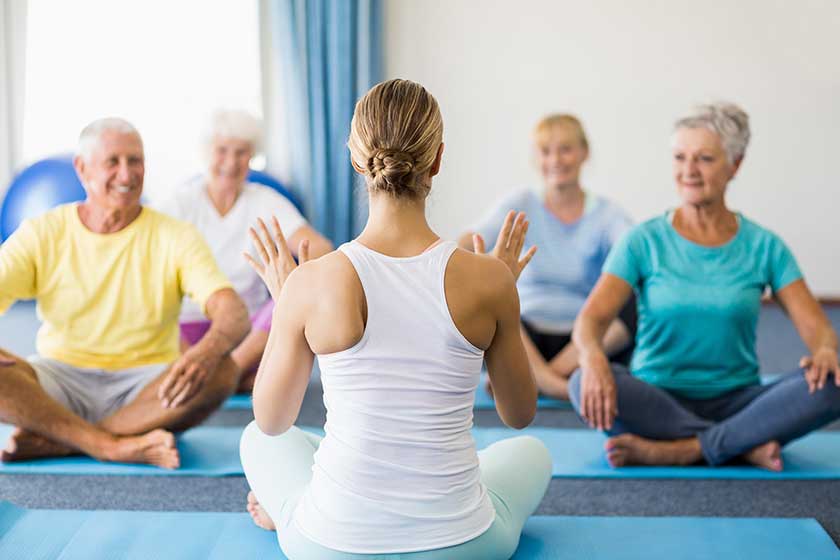Yoga is a great way to stay active and healthy. It helps build muscle tone and flexibility, improve circulation, reduce stress and anxiety, and strengthen your core muscles. While most people think that yoga is only for young people, it can also benefit older ones—if done correctly. Yoga is not a sport or an activity where you need to compete with others; instead, it’s about finding peace within yourself through meditation and deep breathing exercises. If you want to enjoy the physical benefits of yoga for seniors without putting strain on your body or risking injury, here are some tips:
Start Slowly And Don’t Overdo It
The first thing to keep in mind when starting yoga is that it’s not a competition. You don’t have to be able to do everything, and you certainly don’t have to “do better” than anyone else.
Yoga is about finding what works best for you, which may mean doing some poses that feel challenging at first but get easier over time. And as long as you’re listening to your body and maintaining good alignment in each pose, there’s no need for self-consciousness about how your form looks from the outside. Just focus on what feels right internally—and if something doesn’t feel right, stop!
Look For A Specialized Yoga Class
If you are new to yoga and want to try it out, look for a specialized class. You will be able to find many types of yoga classes online or in your local community. For example, assisted living communities often offer low-impact options that are designed specifically for older adults.
Pilates is another great option! The Pilates Method also focuses on flexibility and stability—which can help improve overall strength and balance at any age. Many people enjoy the small group setting as well as one-on-one time with their instructor.
Warm Up Before You Practice Yoga
To get the most out of your yoga sessions, it is important to warm up before you begin. Warming up will help you avoid injury and make your body more flexible. Start with gentle stretches, progressing to more challenging ones as you progress in age and ability. Stretches should be held for at least 30 seconds, but if you want to stretch longer than that, there’s no harm in doing so, provided nothing hurts when done properly.
Avoid Forceful Or Jerky Movements
Avoid sudden or jerky movements. Focus on your breath to help you move slowly and smoothly. As you flow through the asana, engage your breathing so that it’s smooth and even—inhaling and exhaling at the same time each pose is held. Take a moment after each pose (if possible) to relax before moving on to the next one. This helps prevent injury by allowing muscles to stretch fully before moving into the next posture.
Be Aware Of Your Limitations
Your goal should be to practice yoga in a safe and enjoyable way. If you find yourself pushing yourself too hard, take a break. So long as your mind is willing and you are open to learning new things, it is better to learn how to do something right than to rush through something wrong.
Yoga instructors know their stuff! Don’t be afraid of asking questions if you have them—you can always ask them at the end of class or even before class begins. Many studios offer pre-class lectures so that participants can familiarize themselves with what will be taught during that session.
Last but certainly not least: try a pose only if you are sure how it should look or feel when done correctly; always ask for help from an instructor if necessary.







